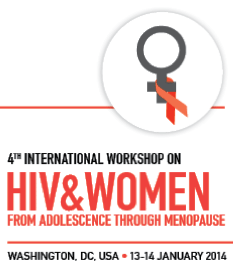Contraceptive choices among a Canadian cohort of HIV positive women
1 February 2014. Related: Conference reports, Women's health, Intl Workshop on HIV and Women 4th 2014.

Polly Clayden, HIV i-Base
Contraception use is high and barrier contraception use moderately high in a Canadian cohort of HIV positive women.
Malika Sharma presented findings at the 4th International Workshop on HIV & Women 2014, from a substudy conducted to understand associations between demographic and HIV-related data and contraceptive choices among women participating in the CTN236: HPV Vaccine in HIV trial.
For the substudy, data on contraceptive use were abstracted for sexually active, pre-menopausal women. Variables included demographics, use and type of ART, CD4 count, viral load, hepatitis B coinfection, details on substance use and sexual history.
Data were available from 377 girls and women of whom 168 women did not meet the inclusion criteria for the substudy: 24 (6.3%) were pre-menarchal, 36 (9.5%) had never had intercourse, 29 (7.7%) were post- menopausal, and 79 (21.0%) had not been sexually active in the past year. The remaining 209 women aged 15 to 57 were included in the analysis.
Of these women: 87% reported a previous pregnancy: 89% reported at least one method of current contraception; 82% reported barrier protection: and 73% reported condom use (with or without other methods) most or all of the time.
Over half (53%) used barrier contraception; 15% barrier plus other; 15% barrier and hormonal; 8% other; 5% none (personal or partner sterilisation) and 4% hormonal contraception.
The majority (80%) of the 17% of the cohort using hormonal contraception did so in combination with barrier protection and 75% of women reported hormonal contraception use in the past.
The median age of women using hormonal contraception (alone or with barrier protection) was 31, while that of women using no contraception or barrier protection alone was 39 and 37 years, respectively.
Of the 34 women using combination HC and barrier methods, 45% were white, 29% were black, 13%) were Aboriginal and 4 13% belonged to other ethnicities. Almost half (48%) of women using barrier methods alone were black. Almost half (46%) of all hormonal contraception users were currently smoking.
Women using hormonal with or without barrier contraception had higher CD4 counts 515 cells/mm3 and 660 cells/mm3, respectively, than those using no contraception 330 cells/mm3. But 82% of women using no contraception had an undetectable viral load compared to 55% of those using hormonal contraception and 48% of those using combined barrier and hormonal contraception.
The majority of women had received prior ART, but 11% were not on ART at study entry. Thirty-one of the women reporting hormonal contraception had received ART (i 11 currently on a PI and 4 an NNRTI based regime), which Dr Sharma noted raised the potential for drug interactions.
Contraception use was high in this cohort but the investigators highlighted high rates of smoking and inconsistent condom use (31% every time and 34% most of the time) as findings of concern in this analysis.
Reference:
Sharma M et al. Understanding current contraceptive choices and patterns among a cohort of HIV- positive women. 4th International Workshop on HIV & Women, Washington DC. 13-14 January 2014. Oral Abstract_11.
http://regist2.virology-education.com/2014/4hivwomen/docs/16_Sharma.pdf

